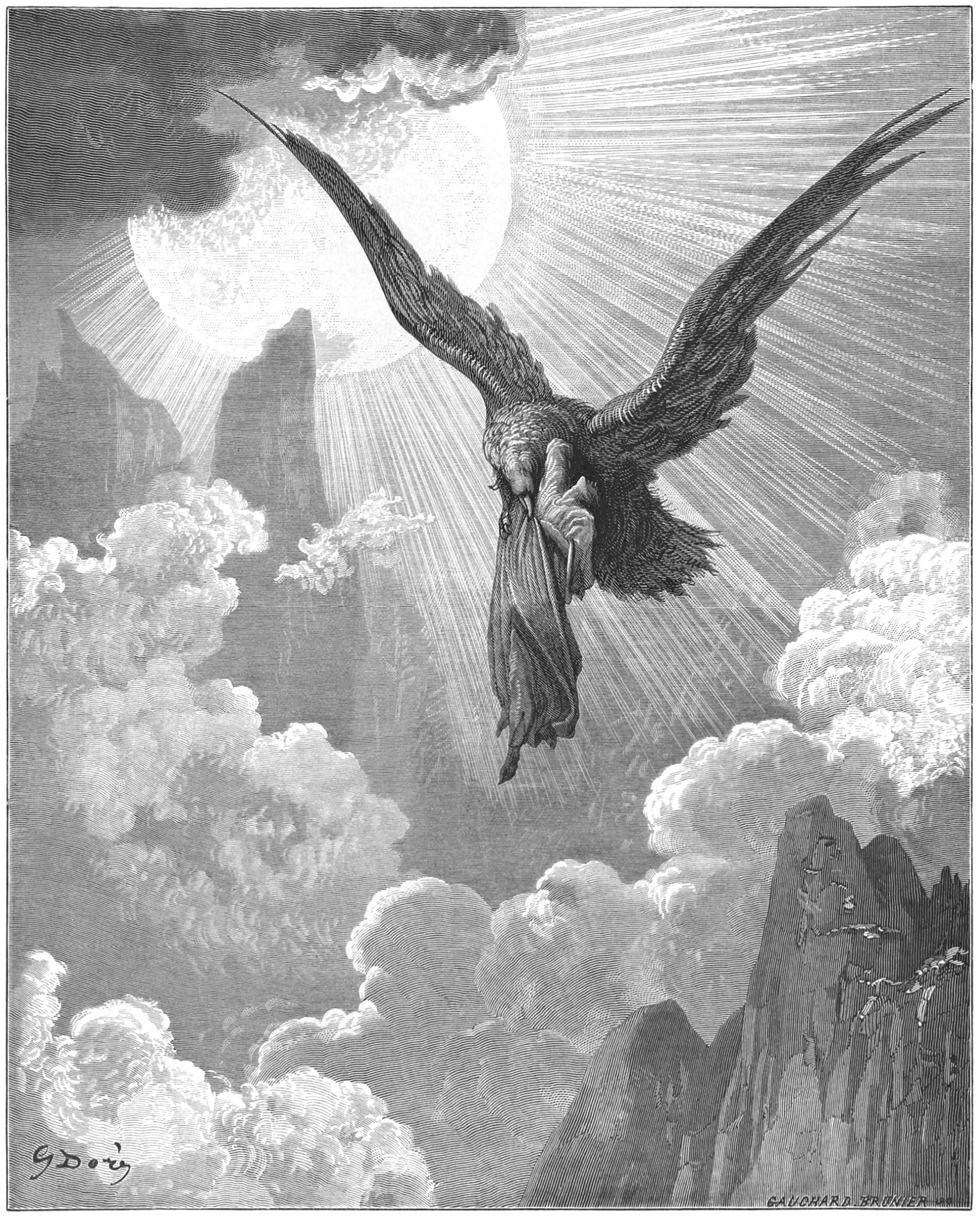Dante and the Eagle
Illustration by Gustave Doré from 1867, showing a scene from Dante’s Purgatorio where Dante is carried upwards by an eagle.
Pictured above is an illustration by Gustave Doré showing a scene from Dante’s Purgatorio. The scene takes place in Canto IX, as Dante is carried by an Eagle to the entry point of Purgatory. As I’ve previously written, the entire structure of Dante’s Divine Comedy is rooted in verticality, and this scene is one example of this. Purgatory is a mountain which Dante must ascend in order to reach Paradise, or heaven.
Canto IX begins with Dante sleeping. While he sleeps, he dreams of an eagle who snatches him up and flies him to the gates of Mount Purgatory. He describes the dream in the following lines:
In dreams it seemed to me I saw suspended
An eagle in the sky, with plumes of gold,
With wings wide open, and intent to stoop,
And this, it seemed to me, was where had been
By Ganymede his kith and kin abandoned,
When to the high consistory he was rapt.
I thought within myself, perchance he strikes
From habit only here, and from elsewhere
Disdains to bear up any in his feet.
Then wheeling somewhat more, it seemed to me,
Terrible as the lightning he descended,
And snatched me upward even to the fire.
-Purgatorio, Canto IX, lines 19-30.
Illustration, circa 1860, by Francesco Scaramuzza showing Dante getting carried by the eagle.
This passage describes an act of verticality as a metaphor for progress. Dante reaches the gates of Mount Purgatory by flight, and from there he must ascend the rest of the mountain to reach Paradise. The symbolism is rich here, with mountains, birds and flight all coming together to represent the soul’s journey upward towards heaven. We all seek to escape the surface of the earth and achieve verticality, and here Dante must achieve this in order to continue his journey up through Purgatory.
Check out other posts on Dante’s Divine Comedy here.


